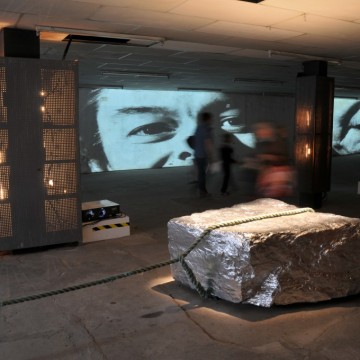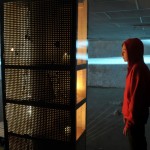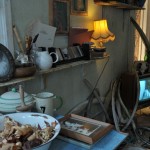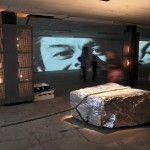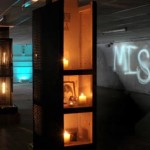Written by Davey Anderson and Liam Hurley with members of the community
The National Theatre of Scotland / St Magnus Festival, Orkney
Movement Direction
★★★★ ‘movement superbly co-ordinated by Simon Pittman to capture the running, darting movements, the wary walking, the intent faces and scanning eyes, of teenagers marking a way through potentially hostile streets and spaces … [this] must be one of the finest pieces of youth project artwork Scotland has ever produced’ (Joyce McMillan, The Scotsman)
Scotsman on Sunday Article:MIXTER MAXTER – THE SHOW ★★★★
MIXTER MAXTER – THE INSTALLATION ★★★★★
IN the Pier Arts Centre in Stromness this summer, there’s a deep, dark space given over to a magnificent piece of video art called Ascension, by US superstar Bill Viola. Filmed underwater, from a couple of feet below a sunlit surface, it shows in slow motion – and in the deepest blue and silver – a male figure plunging feet-first through that surface, and down past our gaze, into the depths; then for ages afterwards, we watch the backwash of tiny bubbles and sparkles rising from where he fell, up towards the sunlight, a billion particles disturbed and moving and reacting, almost to infinity, because of that single action, that single leap.
The Pier Arts exhibition is not technically part of this year’s St Magnus Festival in Orkney; but all the same, the Bill Viola work seems to provide a central image for a festival built, as always, around the pull and surge of the sea that surrounds Orkney, and the mystical sense of the interrelatedness of all things – humanity, nature, the very stuff of earth and water – that forms a key part of Orkney culture. And it would have been easy for the National Theatre of Scotland, wading into the delicate balance of island life for a few months to create a Transform project with young people from Kirkwall Grammar School, to have failed to produce anything that truly reflected that special spirit of the place.
Instead, though, the Mixter Maxter project – directed by Davey Anderson and Liam Hurley, with a team of more than two dozen students in their early-to-mid teens – has produced both a moving and memorable short show, and an outstanding installation, in an old warehouse in Bridge Street, that both complements and expands the performance to create what must be one of the finest pieces of youth project artwork Scotland has ever produced.
The show is a deceptively simple-looking piece, played in a bare in-the-round setting in King Street Halls, which tells the story of a Kirkwall girl called Soley, who runs away from her own life, driven partly by the unkindness of her so-called schoolfriends, and partly by her widowed father’s inability to talk to her about her mother’s death, ten years ago. Played by a series of different girls identified simply by slipping on Soley’s little red hoodie, she runs first to an old warehouse where she keeps a little shrine to her mother, then to the pierhead, where she leaps aboard a ferry, looks out at the pattern of islands ahead and, like the Bill Viola figure, makes a leap from the deck into the ocean, towards what she hopes will be a new or changed life.
At King Street, the story is told verbally and through movement, superbly co-ordinated by Simon Pittman to capture the running, darting movements, the wary walking, the intent faces and scanning eyes, of teenagers marking a way through potentially hostile streets and spaces. The show ends quietly, with a series of questions about the future; but as the young cast circle the hall, intently pressing little imaginary seeds of new life into the hands of Mums and Dads, old folks and tiny toddlers, the sense of empathy and almost of atonement towards a troubled generation of youngsters is overwhelming, and many in the audience are wiping away tears.
If the show is powerful, though, the installation down in the old Bridge Street rope warehouse is irresistible, a series of evocations of settings, images and ideas from Soley’s story – in video, sculpture, projected text, soundscapes and audio journeys, with elements of live performance – that is stewarded with palpable pride by the young people who helped create it, and by the artists (including Kim Beveridge, Alistair Peebles and Anne Bevan) who helped them.
The sense of young people reconnecting with aspects of Orkney’s past as a seafaring and farming island, exploring its rich cultural heritage, and using it to make sense of their own lives today, is intense; and although the Warehouse 18 installation was dismantled on Monday, along with the rest of the project, the young people I spoke to expressed an intense hope that it could somehow live on, and be seen again.
If the NTS show and installation represented a fine example of how to combine different art-forms with power and integrity, though, some of the other “crossover” events in the Festival served to demonstrate just how uneasy such collisions can be.

